Discover 35 hidden attractions, cool sights, and unusual things to do in Dayton (United States). Don't miss out on these must-see attractions: National Museum of the United States Air Force, Hawthorn Hill, and Dayton Art Institute. Also, be sure to include PNC Second Street Market in your itinerary.
Below, you can find the list of the most amazing places you should visit in Dayton (Ohio).
Table of Contents
National Museum of the United States Air Force

Interactive military flight museum. The National Museum of the United States Air Force is the official museum of the United States Air Force located at Wright-Patterson Air Force Base, 6 miles northeast of Dayton, Ohio. The NMUSAF is the oldest and largest military aviation museum in the world, with more than 360 aircraft and missiles on display. The museum draws about a million visitors each year, making it one of the most frequently visited tourist attractions in Ohio.[1]
Address: 1100 Spaatz St, 45431 Dayton
Hawthorn Hill
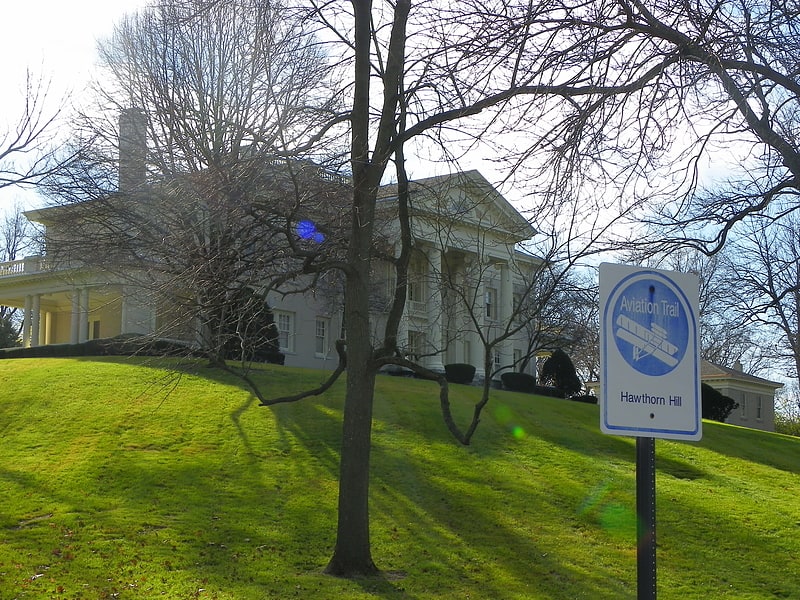
Historical landmark in Oakwood, Ohio. Hawthorn Hill in Oakwood, Ohio, USA, was the post-1914 home of Orville, Milton and Katharine Wright. Wilbur and Orville Wright intended for it to be their joint home, but Wilbur died in 1912, before the home's 1914 completion. The brothers hired the prominent Dayton architectural firm of Schenck and Williams to realize their plans. Orville and his father Milton and sister Katharine occupied the home in 1914.
Though the property now comprises three acres (1.2 ha), the mansion originally sat on 17 acres (69,000 m2). The Wrights named the property after the hawthorn trees found on the property. There are at least 150 hawthorn trees on the site.
Orville Wright designed some of the mechanical features of the house such as the water storage tank used to collect and recycle rainwater, and the central vacuum system; these features reflect his creative genius. For 34 years, this house was the gathering place for the greats and near-greats in the history of American aviation.
The home was owned by the NCR Corporation after Orville's death until August 18, 2006, when the company donated the historic home to the Wright Family Foundation in honor of Orville's 135th birthday and National Aviation Day. NCR used it as a guesthouse for corporate VIPs and for corporate functions. On occasion they opened the home to the general public.
In September 2007, Dayton History, in cooperation with the Wright Family Foundation, began offering scheduled public tours of Hawthorn Hill.
NCR extensively redecorated the mansion's interior after Orville's death. Only Orville's study approximates its pre-1948 appearance. However, Edward A. Deeds, then-chairman of the National Cash Register Company sent a photographer to the home immediately following Orville's death to visually record the interior of the house at that time.
The U.S. Secretary of the Interior designated Hawthorn Hill a National Historic Landmark in 1991 and added it to the U.S. World Heritage Tentative List in January 2008 as a part of the Dayton Aviation Sites listing. It is a component of the National Aviation Heritage Area.[2]
Address: 901 Harman Ave, 45419-3435 Oakwood (Montgomery County)
Dayton Art Institute
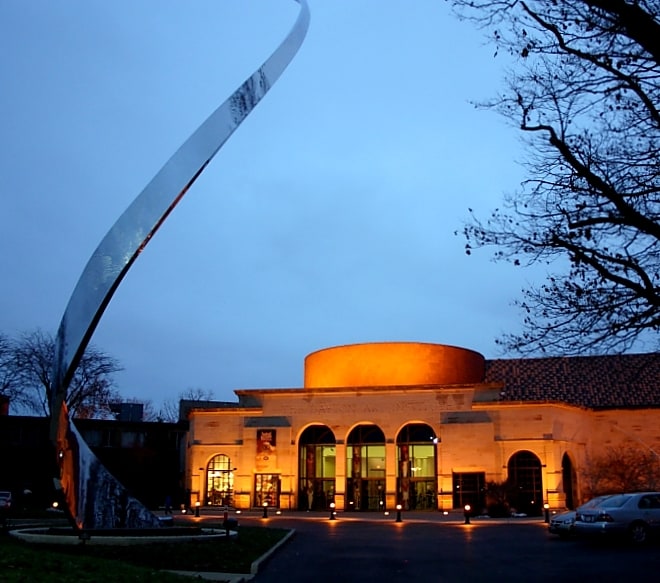
Museum in Dayton, Ohio. The Dayton Art Institute is a museum of fine arts in Dayton, Ohio, United States. The Dayton Art Institute has been rated one of the top 10 best art museums in the United States for children. The museum also ranks in the top 3% of all art museums in North America in 3 of 4 factors. In 2007, the art institute saw 303,834 visitors.[3]
Address: 456 Belmonte Park N, 45405 Dayton
PNC Second Street Market
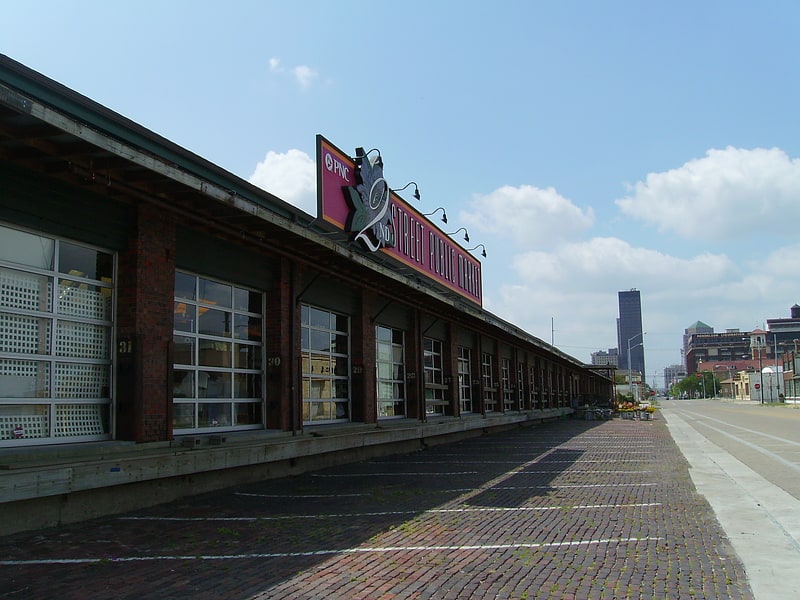
The PNC Second Street Market is a public market in Dayton, Ohio. The market is located at the corner of Webster Street and East 2nd Street. It is Dayton's largest and oldest operating public market. In 2012, Country Living Magazine mentioned the market in its piece called “50 Things To Do This Summer in 50 States”. The market is owned and operated by Five Rivers MetroParks.[4]
Hara Arena
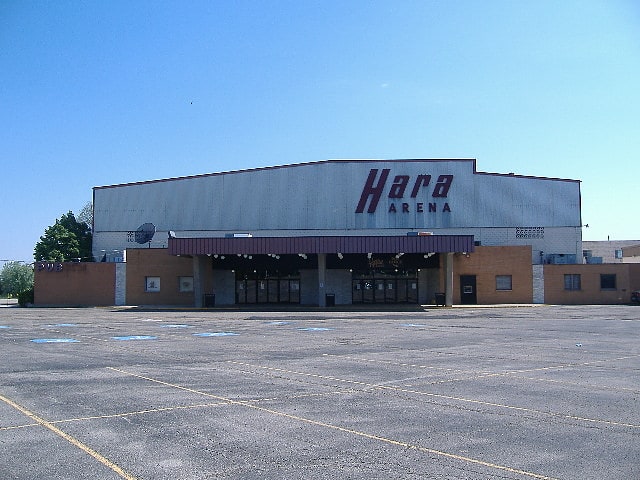
Arena in Trotwood, Ohio. Hara Arena was a 5,500-seat multi-purpose arena located in the Dayton, Ohio suburb of Trotwood. The facility began as a ballroom in 1956, added an arena in 1964 and grew to a six-building complex which closed in August 2016.
At various times, it hosted the Dayton Jets basketball team and Dayton Gems (1964–1977, 1979–1980 and 2009–2012), Dayton Blue Hawks, Dayton Owls, Dayton Bombers, Dayton Ice Bandits, Dayton Demonz, Megacity Hockey Club and Dayton Demolition ice hockey teams and the Marshals indoor football team.[5]
Address: 1001 Shiloh Springs Rd, 45415-2798 Dayton
Carillon Historical Park

Museum in Dayton, Ohio. Carillon Historical Park is a 65-acre park and museum in Dayton, Ohio, which contains historic buildings and exhibits concerning the history of technology and the history of Dayton and its residents from 1796 to the present. As a part of the University of Dayton, the historical elements of the park were the brainchild of Colonel Edward Deeds. The major sections include settlement, transportation, invention, and industry. The park also contains the Carillon Park Railroad, a 7+1⁄2 in gauge miniature railway.
In 2005, Carillon Historical Park merged with the Montgomery County Historical Society to form Dayton History.[6]
Address: 1000 Carillon Blvd, 45409 Dayton
Woodland Cemetery and Arboretum
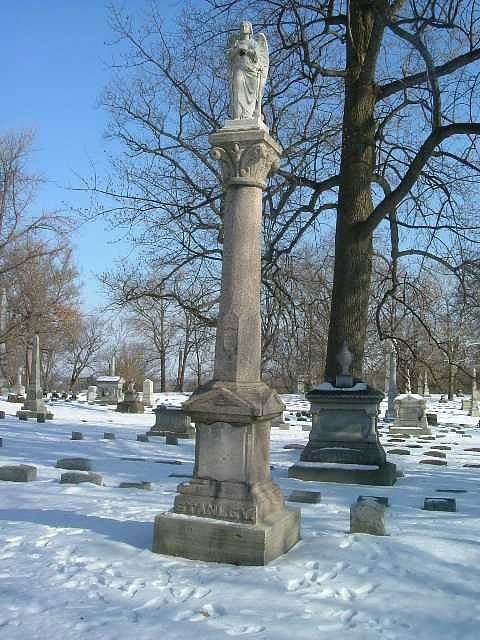
Cemetery in Dayton, Ohio. Woodland Cemetery and Arboretum, located at 118 Woodland Avenue, Dayton, Ohio, is one of the oldest garden cemeteries in the United States.
Woodland was incorporated in 1842 by John Whitten Van Cleve, the first male child born in Dayton. He was the son of Benjamin Van Cleve and Mary Whitten Van Cleve. The cemetery began with 40 acres (160,000 m2) southeast of Dayton and has been enlarged to its present size of 200 acres (0.81 km2). Over 3,000 trees and 165 specimens of native Midwestern trees and woody plants grace the rolling hills. Many of the trees are more than a century old and 9 have been designated "Ohio Champions." The highest point in Dayton is within the cemetery, and during the Great Dayton Flood of 1913, it became a place of refuge.
The Romanesque gateway, chapel and office, completed in 1889, are on the National Register of Historic Places. The buildings were constructed of the stone from the original cemetery wall. The chapel has one of the finest original Tiffany windows in the country. A mausoleum, with a rock and bronze exterior, features twenty-two varieties of imported marble and twelve large stained glass windows inspired by famous literary works. It was added in 1970. The oldest original 105-acre section of the cemetery, known as "Victorian," received a second designation as a historic district on the National Register of Historic Places in 2011.
A receiving vault large enough to contain 12 crypts was built in 1847 by Joseph Wuichert, who was said to be Dayton's premier stonemason. Throughout the 19th century it was used for temporary storage when burials were delayed due to bad weather or for other reasons (for example, refer to the article below on Levi and Matilda Stanley). Located near the main entrance to the cemetery and across from the mausoleum, it is constructed of giant limestone slabs and was designed as a replica of the Egyptian-style temple of Thebes and Karnak. It was unused for nearly 100 years but the exterior was restored in 2008 to its original condition.[7]
Address: 118 Woodland Ave, 45409 Dayton
Wright Cycle Company

The bicycle business of the Wright brothers, the Wright Cycle Company successively occupied six different locations in Dayton, Ohio. Orville and Wilbur Wright began their bicycle repair, rental and sales business in 1892, while continuing to operate a print shop. These shops helped them fund their aeronautical studies.
In 1896 they began manufacturing and selling bicycles of their own design, the Van Cleve, named after an early settler of Dayton, and the St. Clair, named after a territorial governor. They invented the self-oiling hub and devised the innovation of machining the crankarm and pedal on the left side with left-hand threads to prevent the pedal from coming unscrewed while cycling. The brick building at 22 South Williams St. where the Wrights worked from 1895 to 1897, is the only extant building on its original foundation and in its original location that housed a Wright bicycle shop. They ran their printing shop on the second-floor. The 22 South Williams Street building is part of Dayton Aviation Heritage National Historical Park and the National Aviation Heritage Area.
The Wrights used the profits from the Wright Cycle Company to finance their aviation experiments. In 1901 they fitted a third bicycle wheel horizontally above the front wheel of one of their St. Clair bicycles and used the apparatus as a test platform to study airfoil design. They built a six-foot wind tunnel on the second floor of their bicycle shop at 1127 West Third St. the last location of their bicycle business, and from October to December they conducted pioneering tests in the tunnel of over 200 shapes of scale-model wings.
In that same building they designed and constructed their gliders and first airplane, the Wright Flyer, which cost under $1,000 to build. The shop closed in 1909 and they started their aviation company. In 1937, with Orville's cooperation, the building at 1127 West Third St. was moved to Greenfield Village, Dearborn, Michigan by Henry Ford.[8]
Address: 22 S Williams St, 45402-8235 Dayton
Boonshoft Museum of Discovery
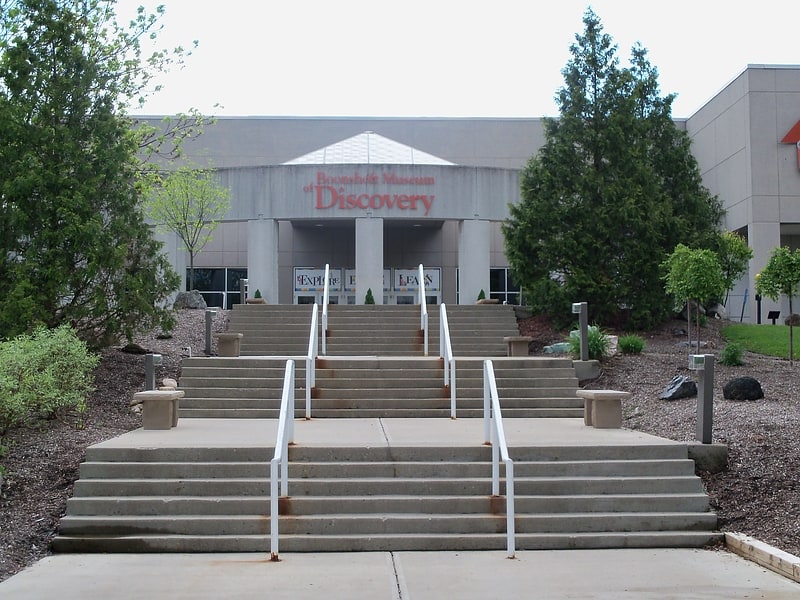
Museum in Dayton, Ohio. The Boonshoft Museum of Discovery is a children's museum, science and technology center and zoo in Dayton, Ohio, United States that focuses on science and natural history. Exhibits include an extensive natural history collection as well as maintaining a collection of live animals native to Ohio and abroad. Educational outreach extends to the community by providing in-school programming and on-site special programs. SunWatch Indian Village and Fort Ancient are the sister sites to the museum.
The museum is accredited by the American Alliance of Museums (AAM), affiliated with the Association of Children's Museums (ACM), and is a governing member of the Association of Science-Technology Centers (ASTC). In addition, the museum's indoor Discovery Zoo is fully accredited by the Association of Zoos and Aquariums. The museum is the only zoo, aquarium, planetarium or science center in Dayton, and also houses the Apollo Observatory, an astronomical observatory operated by the Miami Valley Astronomical Society.[9]
Address: 2600 Deweese Pkwy, 45414 Dayton
SunWatch Indian Village
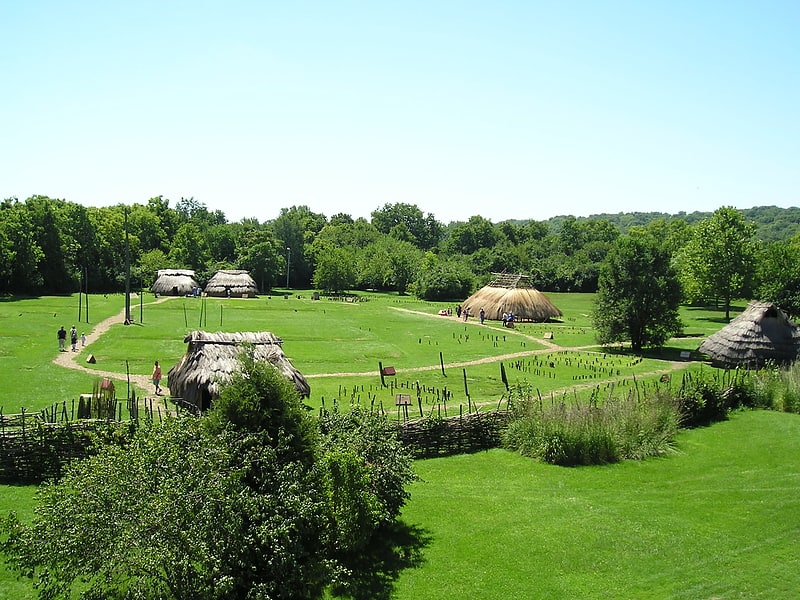
Museum in Dayton, Ohio. SunWatch Indian Village / Archaeological Park, previously known as the Incinerator Site, and designated by the Smithsonian trinomial 33-MY-57, is a reconstructed Fort Ancient Native American village next to the Great Miami River on West River Road in Dayton, Ohio. The dwellings and site plan of the 3-acre site are based on lengthy archeological excavations sponsored by the Dayton Society of Natural History, which owns and operates the site as an open-air museum. Because of its archaeological value, the site was listed in 1974 on the National Register of Historic Places. Since that time, as the many years of archaeological research at the site have led to important findings about the Fort Ancient culture, SunWatch Indian Village was designated in 1990 as a National Historic Landmark.[10]
Address: 2301 W River Rd, 45417-6815 Dayton
Dayton National Cemetery
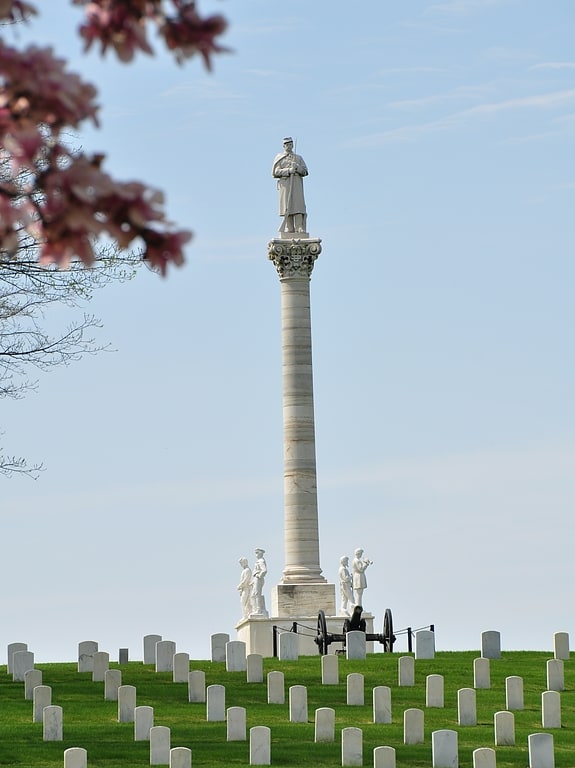
Cemetery. Dayton National Cemetery is a United States National Cemetery located in the city of Dayton in Montgomery County, Ohio. It encompasses 116.8 acres and as of July 18, 2019, had 55,359 interments. In January, 2014, it was one of only fourteen cemeteries to be designated as a national shrine. A new 2,000 niche columbarium was dedicated on July 24, 2014. It is one of a few National Cemeteries with their own Honor Squad. Since its formation, unless refused by family and during a few weeks the National Cemetery Administration disallowed military honors in their cemeteries, no veteran has been buried without a Rifle Salute in addition to "Taps" and the folding and presentation of the Flag. It is also the only National Cemetery with the remains of a funeral tunnel which once allowed deceased veterans to be removed from the Home Hospital to the cemetery. Plans are in process to restore the entrance into the tunnel to its original form.[11]
Address: 4100 W 3rd St, 45428 Dayton
Dayton Aviation Heritage National Historical Park
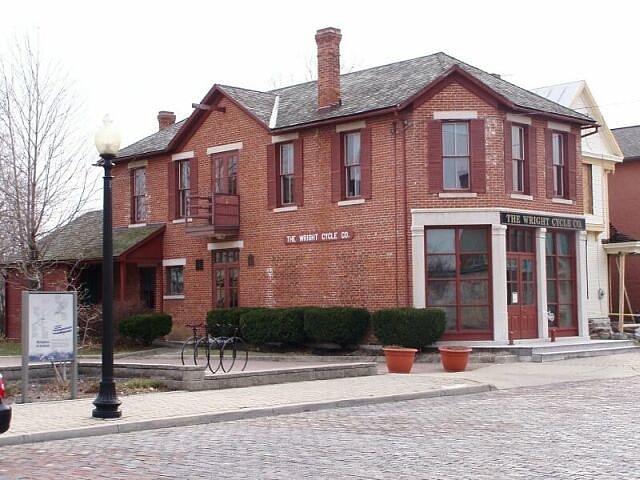
National park in Dayton, Ohio. Dayton Aviation Heritage National Historical Park is a United States National Historical Park in Dayton, Ohio that commemorates three important historical figures—Wilbur Wright, Orville Wright, and poet Paul Laurence Dunbar—and their work in the Miami Valley.[12]
St. Mary's Catholic Church

Church building in Dayton, Ohio. St. Mary's Catholic Church is a historic Catholic church building in an eastern neighborhood of Dayton, Ohio, United States. Constructed at the beginning of the twentieth century, it remains home to an active parish. Its grand architecture has made it an aviator's landmark, and it has been named a historic site by the federal government.[13]
Address: 310 Allen St, 45410-1818 Dayton
Dayton International Peace Museum
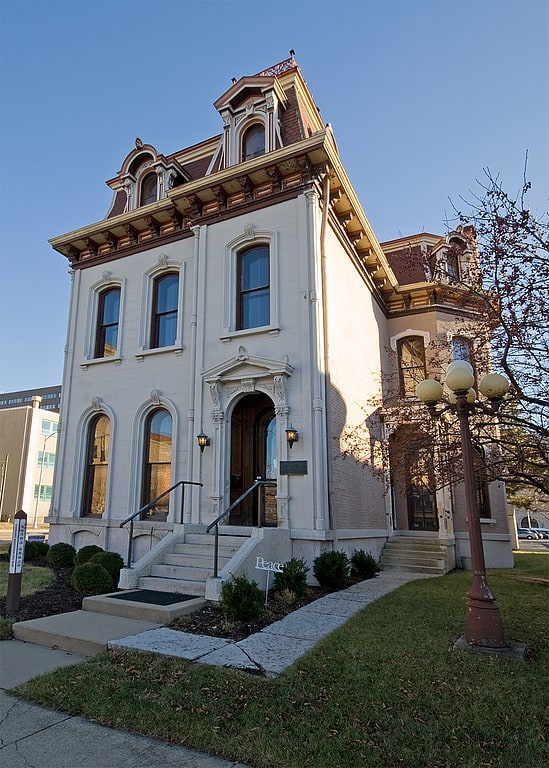
Museum in Dayton, Ohio. The Dayton International Peace Museum is a non-profit, primarily volunteer-run peace museum located in Dayton, Ohio, at 208 W. Monument Ave. The Museum's mission is to promote, through education and collaboration, a more equitable, civil, and peaceful world. Its programs and exhibits are non-partisan, secular, and feature themes of conflict resolution, equity, social justice, tolerance, and protecting our natural world. It is the only peace museum in the Western Hemisphere to still have a physical location.
In addition to functioning as a traditional museum, the Peace Museum serves as an activities center for those who seek a community of peace. The Peace Museum features permanent, temporary, and traveling exhibits that highlight the rich history of, and potential for, nonviolent solutions to conflict and sustainability in the natural world.
Located in Dayton's historic Isaac Pollack House, the Peace Museum includes a library, an interactive children's room, a gathering space where visitors can engage in conversation, and holds events such as book discussions and story slams. In 2014, the 1877 structure was refitted with modern technology. The new equipment allows the Peace Museum to produce multimedia, interactive exhibits, and to broadcast programs and virtual exhibits to multiple rooms.
While the building is currently closed to in-person visitors, the museum is usually open from 10 A.M - 5 P.M Fri-Sun and weekdays by appointment. The Museum is free to members but there is a suggested donation of $8 per person for non-members. There is also free parking located behind the museum.[14]
Address: 208 W Monument Ave, 45402-3015 Dayton
Temple Israel

Synagogue in Dayton, Ohio. Temple Israel is a Reform congregation located at 130 Riverside Drive in Dayton, Ohio. Formed in 1850, it incorporated as "Kehillah Kodesh B'nai Yeshurun" in 1854. After meeting in rented quarters, the congregation purchased its first synagogue building, a former Baptist church at 4th and Jefferson, in 1863. Strongly influenced by Rabbi Isaac Mayer Wise, it rapidly modernized its services, and, in 1873, was a founding member of the Union for Reform Judaism.
The congregation sold its existing building in 1893, and constructed a larger one at First and Jefferson, later severely damaged by the Great Dayton Flood of 1913. In 1927, the congregation moved to still larger, multi-purpose premises at Salem and Emerson Avenues, outside downtown Dayton, and began to use the name "Temple Israel", adding a new sanctuary to the building in 1953. Temple Israel moved to its current building in 1994.
Synagogue membership grew steadily for over 100 years, from 12 families in 1850 to 150 in the early 1900s, 200 by 1927, and 500 by 1945, peaking at 1,100 in the 1960s. By 1995, however, membership was down to 800 families.
Temple Israel has had a number of long-tenured rabbis who were influential both in the congregation and in the larger Dayton community. These have included David Lefkowitz (1900–1920), Louis Witt (1927–1947), Selwyn Ruslander (1947–1969) and P. Irving Bloom (1973–1997). As of 2011, the rabbis were David M. Sofian and Karen Bodney-Halasz.[15]
Address: 130 Riverside Dr, 45405 Dayton
First Lutheran Church

Lutheran church in Dayton, Ohio. First Lutheran Church is a historic Lutheran church in downtown Dayton, Ohio, United States. Constructed in the 1900s for a large congregation, its architecture includes numerous elements seen in older grand churches, and it has been named a historic site.[16]
Address: 138 W First St, 45402 Dayton
Paul Laurence Dunbar House

Museum in Dayton, Ohio. The Paul Laurence Dunbar House was the 1904–1906 home of poet Paul Laurence Dunbar in Dayton, Ohio. It is a historic house museum owned by the state of Ohio and operated by Dayton History on behalf of the Ohio Historical Society; it is also part of Dayton Aviation Heritage National Historical Park. It is located at 219 Paul Laurence Dunbar Street in Dayton.[17]
Address: 219 N Paul Laurence Dunbar St, 45402 Dayton
Lindsey Building
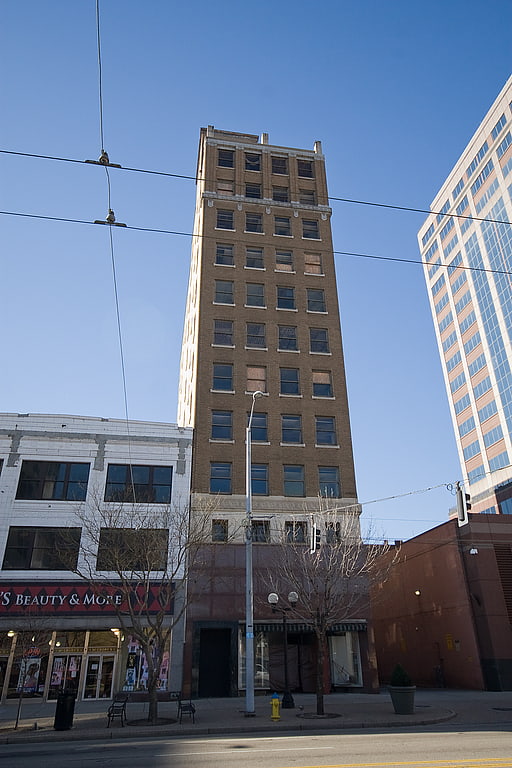
Building in Dayton, Ohio. The Lindsey Building is a historic commercial building in the downtown section of the city of Dayton, Ohio, United States. Built in the early twentieth century, the Lindsey has been named a historic site.
Constructed of brick on a stone foundation, the Lindsey Building's architecture is typical of commercial buildings erected in the early twentieth century. Some of its more distinctive components are Neoclassical, including its three-part facade and some of its smaller details. Twelve stories tall, the building has been modified to include room for modern-styled shops on its first two floors; the main entrance is located in a recessed area to the right (from the perspective of someone inside the building) of the shop space.
Built for Theodore Lindsey, the Lindsey Building was constructed in 1917 at a time when Dayton was highly prosperous. During the late 1910s, the downtown was experiencing sustained growth, and numerous commercial buildings such as the Lindsey were being constructed. For much of its history, it has housed financial institutions, including the Miami Savings and Loan Company and the Mutual Home and Savings Association.
In 1985, the Lindsey Building was listed on the National Register of Historic Places; by the early 2010s, it was one of approximately one hundred such locations in the city of Dayton. It qualified for designation in two separate ways: because of its architecture, and because of its place in local history, for it was deemed a leading example of the downtown's expansion in the early twentieth century.[18]
Address: 25 South Main Street, Dayton
Dayton Memorial Hall
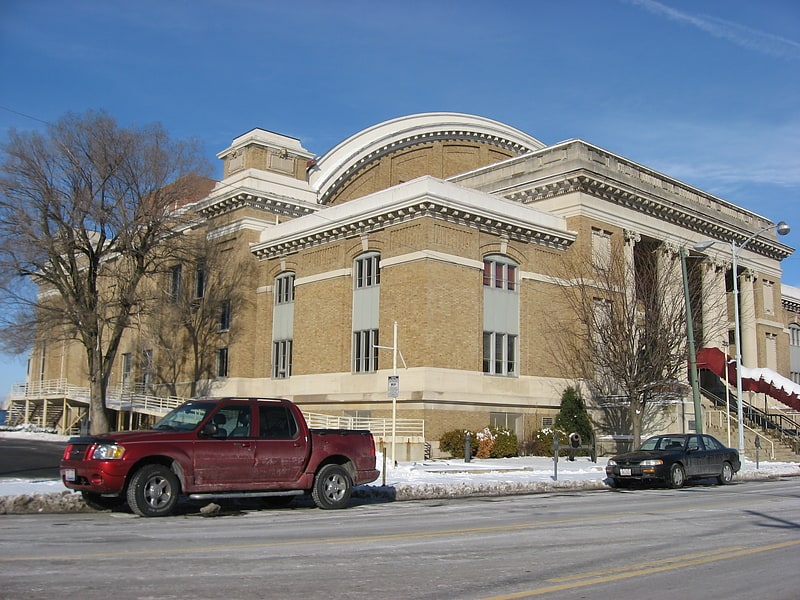
Building in Dayton, Ohio. The Dayton Memorial Hall is a historic meeting venue on First Street in downtown Dayton, Ohio, United States. Constructed shortly after the turn of the twentieth century, this Beaux-Arts structure is one of many memorial halls statewide from the same time period, and it has been named a historic site.
The Memorial Hall is a brick building with a concrete foundation, a ceramic tile roof, and elements of stone and terracotta. Its central section, meant to hold the activities for which the building was constructed, is a two-story structure, while other sections vary in scale: a grand Neoclassical entrance, complete with paired columns in the Ionic order, sits atop a flight of steps in the middle of the facade, while lesser sections flank the entrance and compose the building's sides. Small towers are placed atop the sides, between the central auditorium and the surrounding land. Although the main entrance is only accessed via the flight of steps, side entrance may be gained by the use of a ramp. The building's entrance comprises the memorial itself, housing inscriptions honoring local Civil War soldiers and a sculpture honoring Spanish–American War soldiers; a World War I sculpture sits in the same area.
Legislation enacted by the General Assembly in 1902 encouraged the construction of memorial buildings in communities statewide; for the first time, municipalities were permitted to float bonds in order to obtain money needed to construct such buildings. Designed by William Earl Russ, erected in 1907, and dedicated in 1910, Dayton's was typical of the numerous memorial buildings built soon after the law's passage, both architecturally and functionally. Throughout the century following, it served as a meeting place for community activities ranging from entertainment festivities to educational events to cultural activities.
In 1988, the Memorial Hall was listed on the National Register of Historic Places, qualifying both because of its significant architecture and its important place in Dayton's history. Similar recognition has been awarded to other memorial halls in the Ohio cities of Cincinnati, Greenville, and Lima, all of which are Neoclassical structures completed soon after the 1902 legislation.[19]
Address: 125 E 1st St, Dayton
Schuster Performing Arts Center
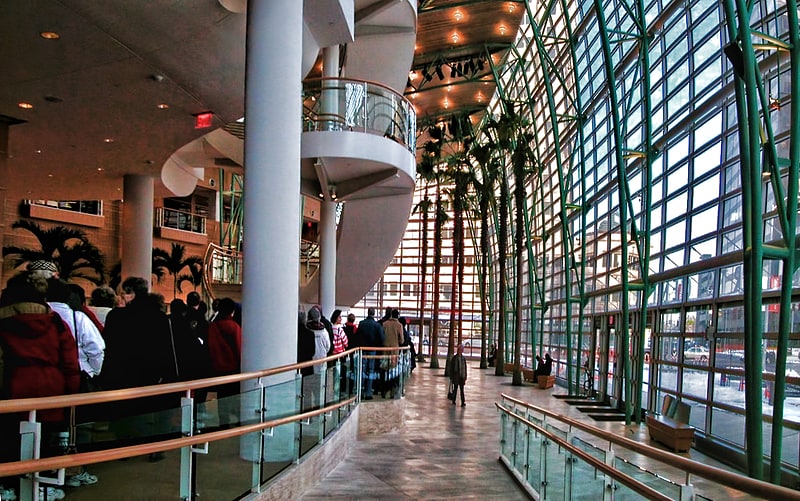
Theatre in Dayton, Ohio. The Schuster Performing Arts Center is located in Dayton, Ohio and was built in 2003 to serve as Dayton's principal center of the lively arts. It is owned and operated by the Victoria Theatre Association and occupies the former site of Rike's department store. The Center opened an additional venue to house the Association's larger touring Broadway productions and presentations. The Dayton Philharmonic, the Dayton Opera, and the Dayton Ballet rent the building for their performances. The Schuster Center and the Metropolitan Arts Center, occupying the former Metropolitan department store building next to the Victoria Theatre, stage a variety of performances of any size and form the basis of the performing arts district in downtown Dayton.
The Schuster Center comprises restaurants, a large Winter Garden, a 15-story office and residential tower, and a blackbox theater and rehearsal space.
Architect César Pelli, in designing the center's 2,300 seat Mead Theatre, included a fiber-optically illuminated domed ceiling depicting the Dayton sky as it appeared on the eve of the Wright Brothers’ first flight - December 16, 1903. The Winter Garden houses exotic palm trees and a café with a large glass and steel wall that looks out onto downtown Dayton.
Since its opening, the Schuster Center has hosted a number of top musical shows, including Wicked, Jersey Boys, Joseph and the Amazing Technicolor Dreamcoat and Beauty and the Beast.[20]
Address: Dayton, 1 West Second Street
St. Adalbert Polish Catholic Church
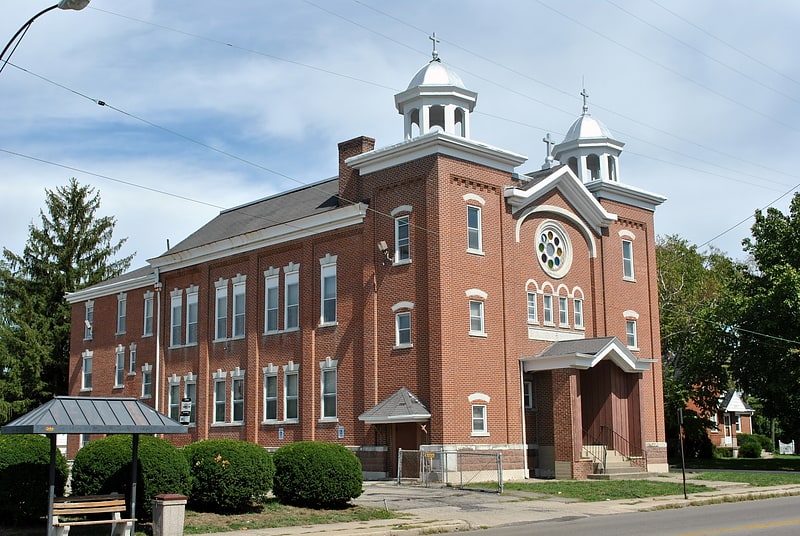
Church in Dayton, Ohio. St. Adalbert Polish Catholic Church is a historic church at 1511 Valley Street in Dayton, Ohio.
On Sunday, April 30, 1905,St. Adalbert Church was dedicated by Archbishop Henry K. Moeller of Cincinnati.
In 1954, parishioners build a new rectory and grotto shrine at the church.
In 1961, preparations began for the building of a new St. Adalbert's church. On Holy Thursday, March 23, 1967, the first mass was held at the new church. It was dedicated on the Feast of St. Adalbert, April 23, 1967.[21]
Address: 1509 Valley St, 45404-2212 Dayton
Victoria Theatre
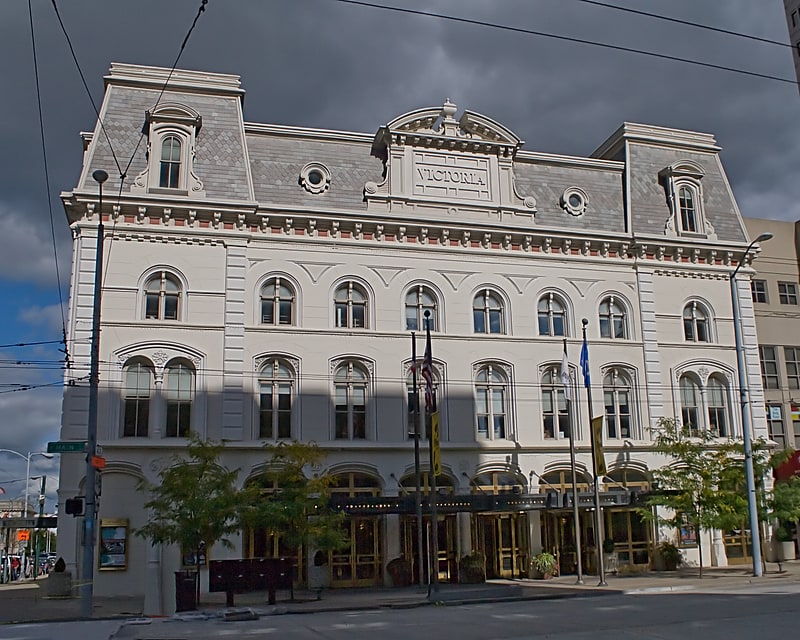
Performing arts theater in Dayton, Ohio. The Victoria Theatre is a historic 1,154-seat performing arts venue located in downtown Dayton, Ohio. The Victoria presents traveling broadway shows, concerts and other theatrical productions such as The Phantom of the Opera.[22]
Address: Dayton, 138 North Main Street
Dayton Aviation Heritage National Historical Park
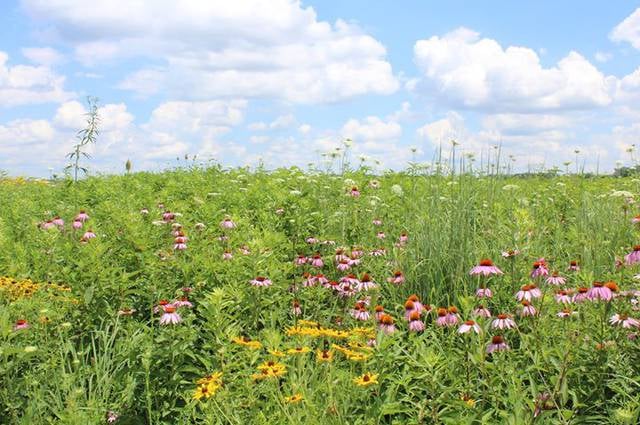
Museum, National park, Historical place, Park, History museum
Address: 26 S Williams St, 45402-8235 Dayton
America's Packard Museum
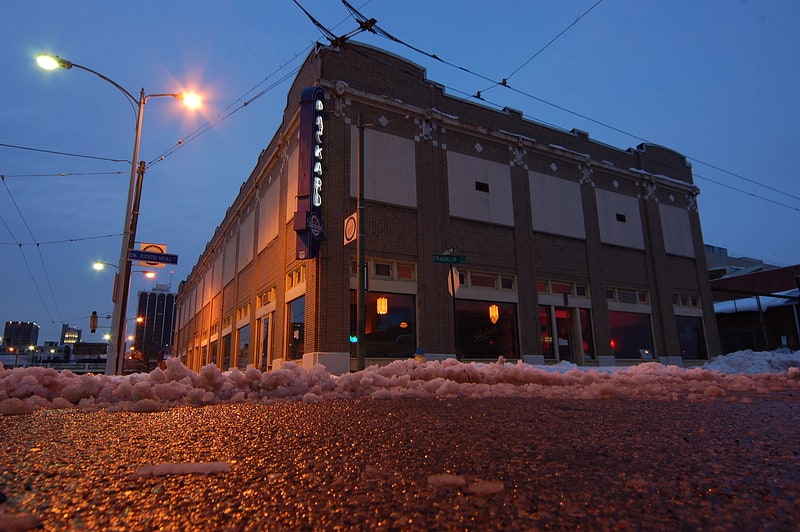
Museum in Dayton, Ohio. America's Packard Museum is an automotive museum located in Dayton, Ohio.[23]
Address: 420 S Ludlow St, 45402-2605 Dayton
Stratacache Tower
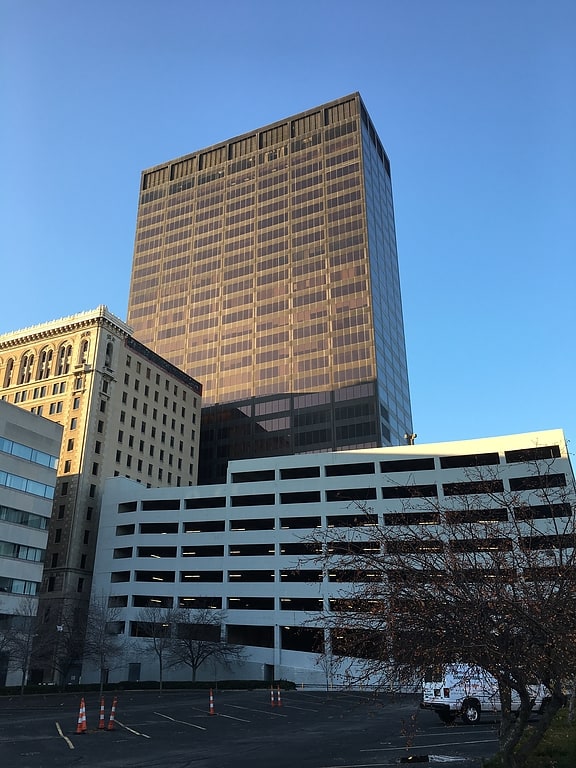
Building in Dayton, Ohio. Stratacache Tower, also known as Kettering Tower, is a high-rise office building located in Dayton, Ohio. The Stratacache Tower was built in 1970 and is currently the tallest building in the city. Lorenz Williams Inc. was the firm responsible for construction of the building. Stratacache Tower has 30 floors and is 124 meters or 405 feet tall. The Stratacache Tower has its own zip code: 45423.[24]
Address: 40 North Main Street, Dayton
Dayton Masonic Center
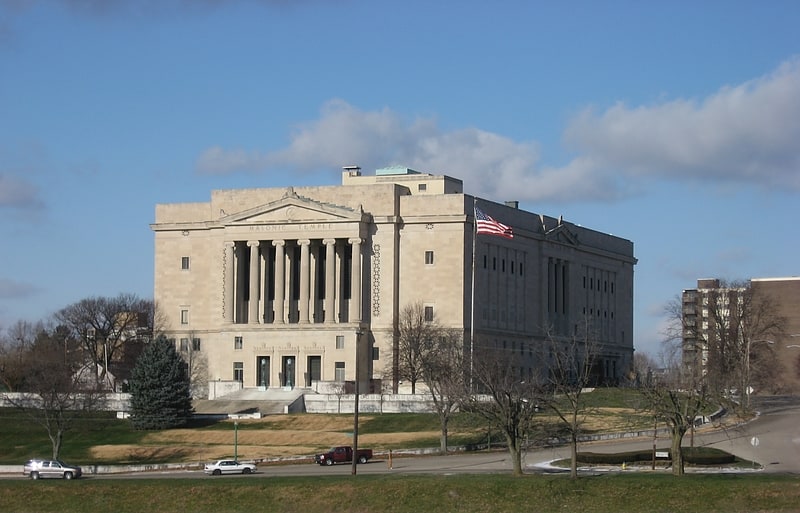
Fraternal organization in Dayton, Ohio. The Dayton Masonic Center, formerly the Dayton Masonic Temple, is a significant building in Dayton, Ohio.
It was built by a Masonic Temple Association formed from 14 Masonic groups. The building was finished in 2 years and 9 months, by 450 workers, most of whom were Masonic Brethren, of whom it was said "Without thought of honor or gain, these men gave unstintingly of their time, abilities and means, sparing neither themselves nor their personal interests to advance this building project to its happy fulfillment."
The building is 265 feet (81 m) long by 190 feet (58 m) wide by 80 feet (24 m) high, and encloses 5,000,000 cubic feet (140,000 m3). It is made of steel, cement, and stone, including 55,000 cubic feet (1,600 m3) of Bedford stone and 15,000 cubic feet (420 m3) hard limestone and marble from Vermont, Alabama, and Tennessee.
It is a contributing property in the Steele's Hill-Grafton Hill Historic District, which was added to the National Register of Historic Places in 1986. The building is also included in a locally designated historic district.[25]
Address: 525 W Riverview Ave, Dayton
Patterson Homestead
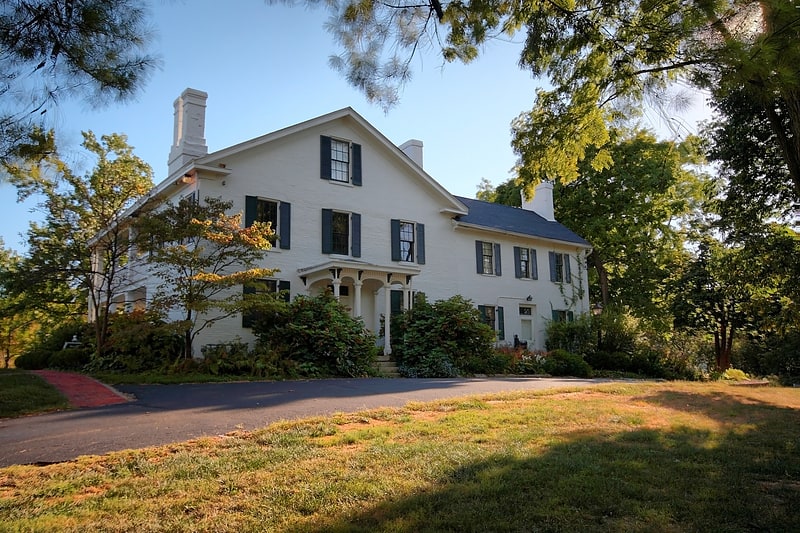
Museum in Dayton, Ohio. The Patterson Homestead is a historic house museum located at 1815 Brown Street in Dayton, Ohio, United States. It was built in 1816 by American Revolutionary War veteran Colonel Robert Patterson.
The house was built using Federal architecture in several sections over forty years. In 1953, the house was donated to the city of Dayton and has been used for a variety of purposes. At present time, the museum has six rooms containing period artifacts and original Patterson family artifacts.
Robert Patterson's grandsons, John Henry Patterson and Frank Jefferson Patterson lived in the house as young children, and would eventually go on to found the National Cash Register Company (now NCR Corporation) in 1884.
The home is listed on the National Register of Historic Places in 1976 and is currently operated by Dayton History.[26]
Address: 1815 Brown St, 45409-2414 Dayton
Holy Cross Lithuanian Roman Catholic Church
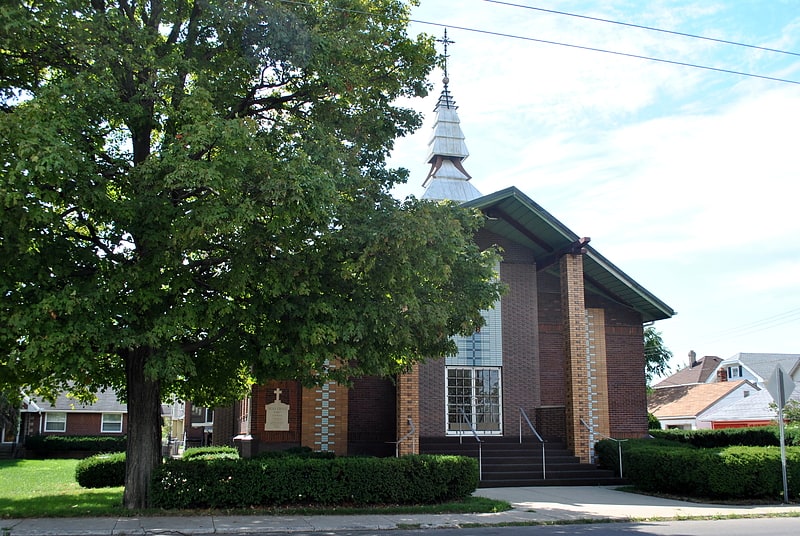
Church in Dayton, Ohio. Holy Cross Lithuanian Roman Catholic Church is a historic church in Dayton, Ohio. Built in 1914 by Lithuanian immigrants, the church has been a fixture in the community since then. The church has ornate Lithuanian folk art stained glass windows depicting religious symbolism and the life of Jesus Christ.
An annual, popular fundraiser is the turtle soup and kugelis sale each November. Though turtle soup is not a traditional Lithuanian dish, it was made popular by the Old North Dayton Lithuanian community during World War II when other meats were scarce.
Designed by Jonas Mulokas, it was built in 1965 and added to the National Register of Historic Places in 1991.[27]
Sacred Heart Catholic Church
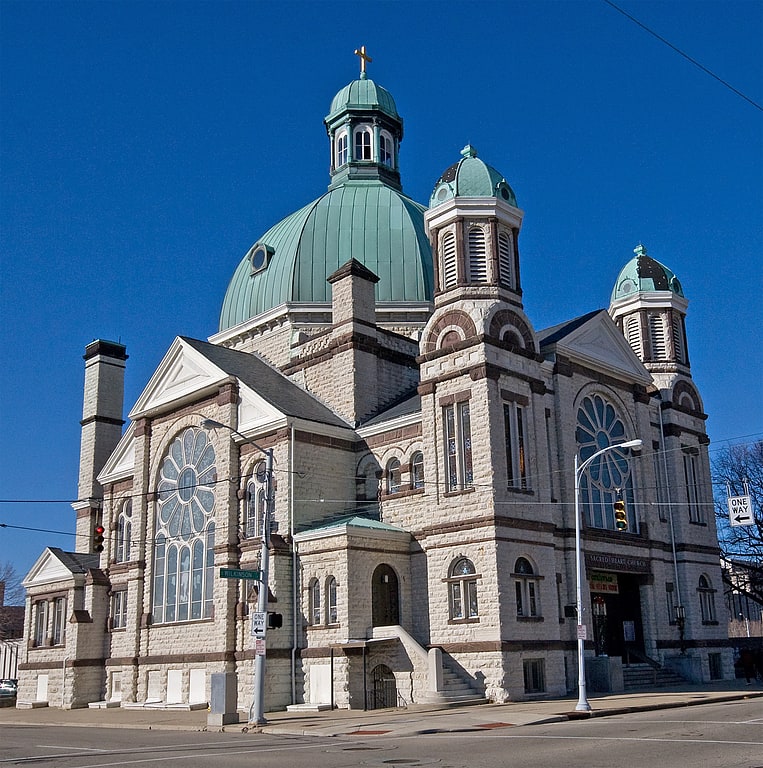
Church building in Dayton, Ohio. Sacred Heart Catholic Church is a historic Catholic church building in downtown Dayton, Ohio, United States. Constructed at the end of the nineteenth century for a new parish, it closed in 1996, but was reopened in 2001 when a Vietnamese Catholic group began to use the church. This church building remains significant because of its grand architectural elements, which have led to its designation as a historic site.[28]
Address: 217 W 4th St, 45402 Dayton
RiverScape MetroPark

Park, Relax in park, Music venue
Address: 111 E Monument Ave, 45402-1284 Dayton
Newcom Tavern
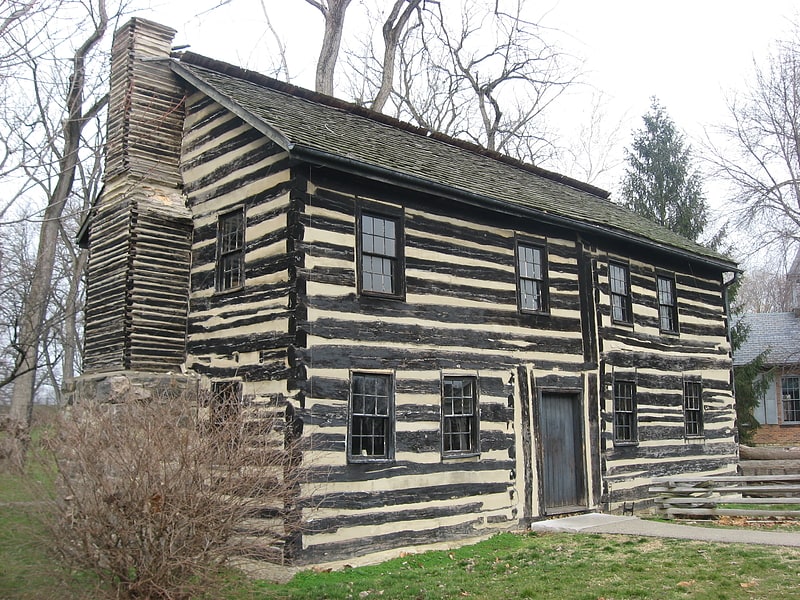
Historical place museum in Dayton, Ohio. Newcom Tavern, also known as the "Old Cabin", is an historic structure in Dayton, Ohio and is the city's oldest existing building. It was built in 1796 for Colonel George Newcom and his wife Mary, who ran it as a tavern and hostel. The building passed through several owners, and its historical significance was forgotten until planned construction revealed the original log structure. The building was moved twice and now located in Dayton's Carillon Historical Park and operated as a museum.[29]
Dayton Metro Library

Dayton Metro Library is a multi-branch library system serving 458,677 residents of the Dayton Metropolitan Area. It has 19 locations across the area. Almost 5.8 million items were borrowed in 2018. The Dayton Metro Library ranks in the top ten best libraries in the United States serving a population of over 250,000 by HAPLR. The Dayton Metro Library system is considered a county system with branches in cities and towns throughout Montgomery County, Ohio, but does not have branches in Centerville, Germantown, Oakwood, Riverside or Washington Township. All are serviced by libraries of their own, save Riverside, various parts of which are geographically close to Dayton Metro Library locations, including Burkhardt, Electra C. Doren and Huber Heights.[30]
Address: 215 E 3rd St, 45402 Dayton
Dayton Convention Center
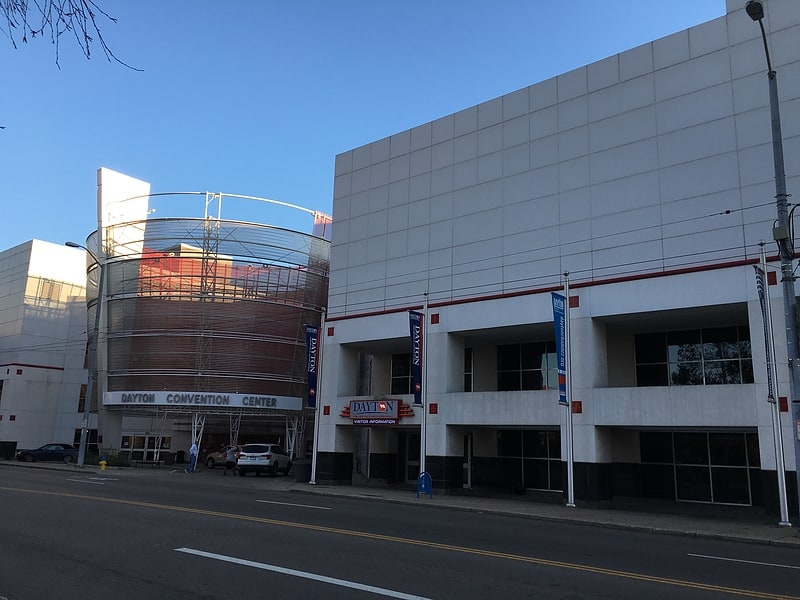
Convention center in Dayton, Ohio. The Dayton Convention Center is the primary public convention center in Dayton, Ohio, United States.
Located in downtown Dayton at 22 E. Fifth Street, the Dayton Convention Center is a 150,000 sq ft (14,000 m2) facility with 68,000 sq ft (7,150 m2) of exhibit space, a 672-seat theater, and 19 meeting rooms including a VIP lounge overlooking the exhibit halls.[31]
Address: 22 E 5th St, 45402-2413 Dayton
Dayton Motor Car Company Historic District

The Dayton Motor Car Company Historic District, in Dayton, Ohio, is a 12 acres historic district which was listed on the National Register of Historic Places in 1984. The listing included 12 contributing buildings.
It includes properties at 15, 101,123-5 Bainbridge; 9-111 and 122-124 McDonough, in Dayton, including at least one dating back to 1873.[32]
Wegerzyn Gardens Foundation
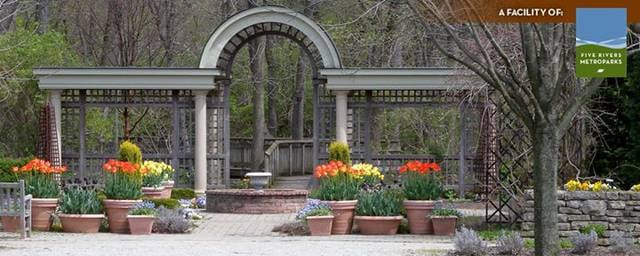
Park, Relax in park, Garden, Nature and wildlife
Address: 1301 E Siebenthaler Ave, 45414-5300 Dayton